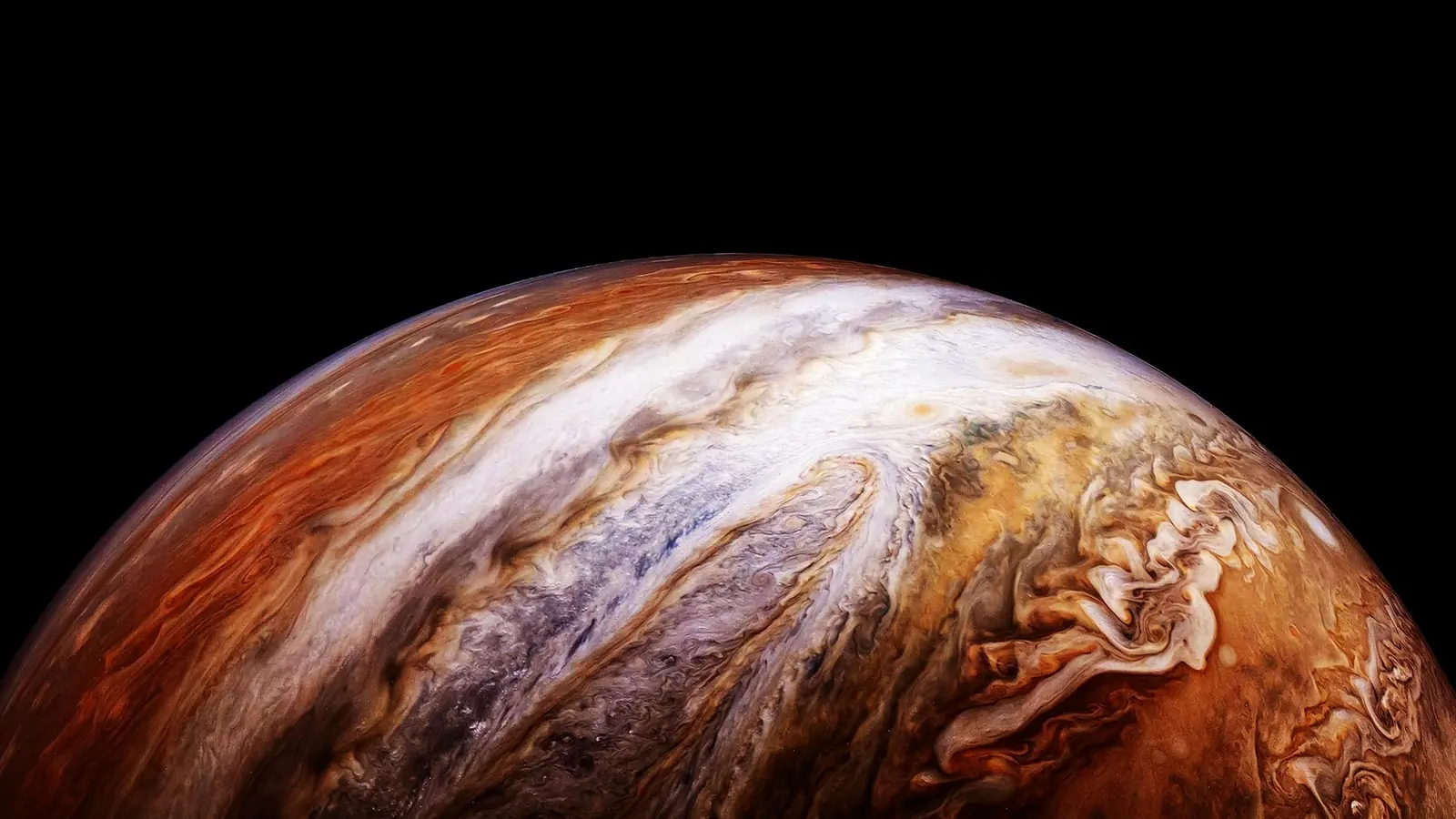5 Minutes
New computer models from Rice University suggest Jupiter's rapid early growth reshaped the young solar system, carving rings and gaps in the gas-and-dust disk that produced a second wave of planet-building rocks. That late generation may explain why many primitive meteorites formed millions of years after the very first solids.
How a growing giant carves a disk and halts inward drift
Planetary scientists at Rice, led by André Izidoro and graduate student Baibhav Srivastava, combined high-resolution hydrodynamic models of a forming Jupiter with simulations of dust dynamics and planet formation to track the planet's influence on its protoplanetary disk. The results, published in Science Advances, show that as Jupiter reached substantial mass early on, its gravity launched waves through the gas. Those waves opened a gap and created pressure maxima that acted like cosmic traffic jams for solid particles.
Instead of drifting inward and falling into the young Sun, millimeter- to centimeter-sized grains piled up at pressure bumps and formed dense, long-lived rings. Inside these rings, particles could stick together and collapse into planetesimals—kilometer-scale bodies that are the raw material for planets and meteorites.
Simulations and methods: coupling gas dynamics to dust behavior
The team used coupled hydrodynamic and particle-evolution codes to model gas flows, turbulent diffusion, and particle-trapping in detail. By varying Jupiter's growth rate and timing, they explored scenarios in which the giant planet formed early enough to intercept inward-drifting solids and create stable reservoirs. Those reservoirs are where a second population of planetesimals could appear well after the first generation formed from the disk's initial solid inventory.
Why chondrites arrived late — the second generation of building blocks
Chondrites are stony meteorites that preserve unaltered dust and small spherules called chondrules. Unlike early planetesimals that melted and differentiated, chondrites carry pristine chemical and isotopic records. One long-standing puzzle has been why many chondrites formed 2–3 million years after the earliest solids—an interval that traditional collapse models struggled to explain.
Izidoro and Srivastava's models provide a natural answer: Jupiter's gap separated the inner and outer disk, protecting each region's unique isotopic signature while also creating new sites where solids could accumulate later. The planetesimals forming in these pressure traps represent a 'second generation' of building blocks whose formation coincides with the ages inferred for chondritic meteorites.
Srivastava notes that this mechanism ties together isotopic evidence and dynamical evolution: Jupiter's early presence preserved the isotopic dichotomy between inner and outer solar system material, while also producing the delayed planetesimal formation seen in meteorite records.

Diagram of Jupiter’s growth. Credit: Rice University
Implications for Earth, the inner planets and exoplanet systems
The simulations also help explain why the solar system's terrestrial planets—Mercury, Venus, Earth and Mars—survived near 1 astronomical unit instead of spiraling into the star. By opening a gap, Jupiter effectively choked off inward gas flow that can drive rapid inward migration of growing planets. Without that barrier, many young planets in other systems seem to move inward and pile up close to their stars. Jupiter's early influence likely anchored the inner solar system and prevented a similar fate for Earth.
These findings dovetail with high-resolution observations of protoplanetary disks by ALMA (the Atacama Large Millimeter/submillimeter Array). ALMA images frequently show rings and gaps in disks around young stars—features that planetary scientists interpret as signatures of forming giant planets sculpting their birth environments. The Rice study reinforces that interpretation and places our solar system in that broader context.
Beyond solving a meteorite timing problem, the work provides a framework for linking meteorite chemistry, isotope geochemistry, and large-scale disk dynamics. It points to a solar system that was actively restructured while its solid inventory continued to evolve—so the rocks that eventually rained down on Earth recorded not one, but multiple generations of planetary assembly.
Expert Insight
Dr. Lena Morales, a planetary dynamicist at the Institute for Space Studies (not involved in the Rice study), offers perspective: 'This research elegantly connects what we see in meteorite labs with what telescopes see in star-forming disks. The idea that Jupiter could both protect distinct isotopic reservoirs and seed a later wave of planetesimal formation helps reconcile several previously disconnected observations. It also emphasizes how sensitive planet formation is to the early timing of giant-planet growth.'
Looking ahead, the Rice models suggest testable predictions: meteorite populations should preserve signatures of formation in pressure traps, and ALMA surveys of very young disks could reveal planet-mass perturbations early enough to match the timing required by the meteoritic record. Future work will refine Jupiter's exact growth timeline and how that timing varies with disk mass and turbulence.
Source: scitechdaily
Comments
skyspin
not sold yet, rings could mean other things. Are pressure traps a unique signature? Need ALMA snapshots of very young disks, ASAP. quick thought
astroset
Whoa, Jupiter as a cosmic traffic cop for pebbles? Mindblown. Ties chondrite ages to disk dynamics, and keeps Earth safe. If that timeline holds.. tho, how much do disk turbulence and timing change the picture?


Leave a Comment